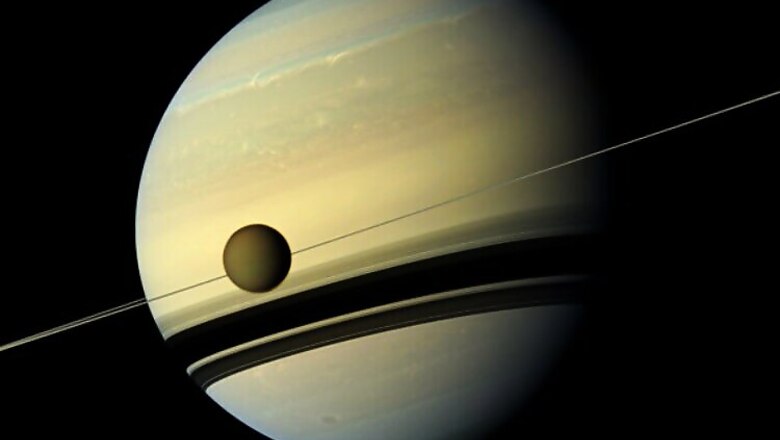
views
Washington: Researchers have found how water ions escape from the Saturn's environment after locating a point from where the ions exhaust out of the planet's atmosphere.
Daniel Reisenfeld, a professor at the University of Montana in US, is a member of the Cassini research team, a NASA-managed probe that studies Saturn. Cassini has been in orbit continuously collecting data since 2004.
One of the instruments on Cassini measures the planet's magnetosphere - the charged particles, known as plasma, that are trapped in the space surrounding Saturn by its magnetic field.
One of Cassini's past discoveries is that Saturn's plasma comprises water ions, which are derived from Saturn's moon Enceladus, which spews water vapours from its Yellowstone-like geysers.
Knowing that the water ions would not be able to accumulate indefinitely, researchers set out to explain how the water ions escape from Saturn's magnetosphere.
The researchers said that the plasma found a place to exhaust out of the magnetosphere at a reconnection point - where magnetic fields from one environment disconnect and reconnect with magnetic fields from another environment.
In the case of Saturn, researchers discovered the reconnection point was located at the back of the planet, where the magnetotail was connecting with the solar winds' magnetic field.
Reisenfeld likens the situation to a rotary or a traffic circle. Once you get into the rotary you have limited exit points.
"If you can't find the exit, you keep going around in circles," he said.
"So, the plasma around Saturn is basically trapped to go around the rotary. We assumed it had to escape somehow and somewhere, but actually finding the jettison point is pretty cool," he said.
The discovery will help scientists understand the physics of how other rapid rotators such as Jupiter, stars and pulsars expel their materials and the details of how it works.
"It's very exciting to have discovered this reconnection location because reconnection is one of the holy grails of plasma physics," Reisenfeld said.
The study was published in the journal Nature Physics.
















Comments
0 comment